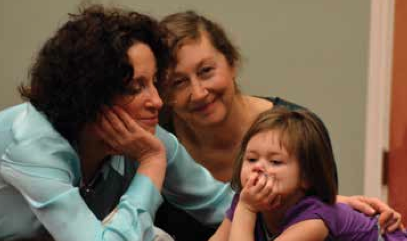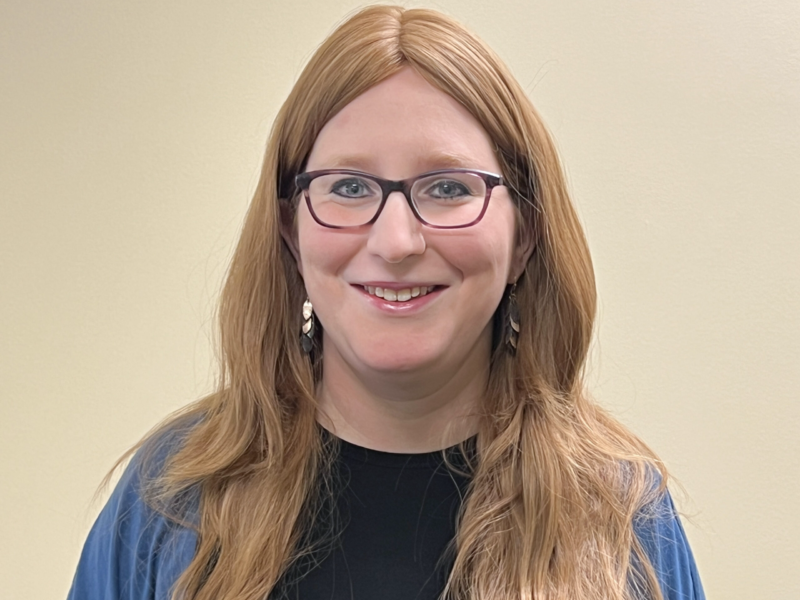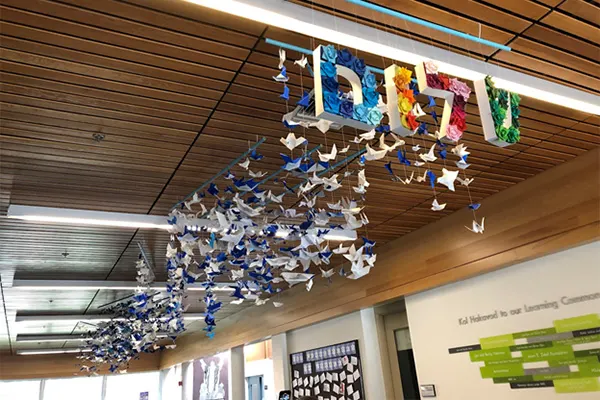
A child is born. It is perfection, a miracle. Often long before the birth, we have begun creating a vision for our child’s future. She will grow up to have a full and satisfying life, independent and whole. Then comes the shock. Something is wrong with my child!
As the realization that something is wrong sinks in, there is a powerful desire to do anything and everything we can to help our child grow up beyond her present limitations, to be “normal” and to have a rewarding life. The question we must ask ourselves is, how do we get there?
It is natural to focus on the limitation, on what the child can’t do, or on what she is doing wrong, and then try to conquer, stop or otherwise overcome it. We want to solve the problem, and fix the child so she will sit up, talk, read, write, relate to others and reason the way she would if it weren’t for her special needs.
What we often don’t realize is that we have adopted this approach from our experiences with mechanical objects, such as a car or a home appliance. When it breaks down, if we can’t fix it ourselves, we hire an expert who knows how to do it. In other words, most of us have an understanding of fixing as repairing what is broken, or restoring the way something is supposed to look and function.
However, unlike the child, a machine that needs fixing is already formed and can take no active part in the repair process. It has no mind of its own, no self-healing ability, and it doesn’t possess the capacity to learn, grow and evolve. Yet, how natural it is to want to use this same fixing paradigm for a child with special needs! We want to replace any missing part or parts that aren’t working well and adjust this or that so that everything will be working just right.
However, your child is not a finished product. Actually he’s quite the opposite. Children are living, feeling and experiencing beings: works in progress – growing, evolving and in the process of figuring out and continuously forming the abilities to move, think, understand themselves and relate to the world around them. At the center of all this unfolding potential is that most remarkable of all organs, the brain. Regardless of his special needs, your child possesses a brain that must be involved actively in creating new connections and patterns for overcoming the limitations and difficulties he may have. This is what every brain is designed to do. And this is where our hope lies.
What I propose here is a significant departure from traditional systems of teaching and therapy. I propose to back off from trying to make the child do what he can’t do – the fixing paradigm – and instead look to connect with the child and his brain. To shift our focus from the end result we want the child to achieve, such as walking, talking, relating socially or writing, to finding ways to provide the brain with the rich flow of information it needs to be able to organize itself, the body and the mind in order to perform successfully.
Often overlooked is that the child learns his or her experience, not what we think he should be learning. When we ask a child, repeatedly, to try and do something he can’t, his brain acquires the patterns of his failure! Added to this are the possible feelings of fear, inadequacy, being bad and wrong, and even anger and resentment – all separating the child and the adult and interfering with the connection between the two. This leaves the child’s brain depleted of the rich flow of new information the brain needs to learn and grow successfully despite his special needs.
You can connect with your child’s brain and help it get the information it needs through the Nine Essentials – scientifically validated tools that turn the brain into a brilliant learning machine.
The first step for connecting with your child is to remember that she is a living, feeling, sensing, thinking, experiencing and actively learning participant in any and every ability she will ever develop in her life. She is your partner, and she needs you to be there with her. You do that by beginning where she is right now in terms of what she can already do, not trying to make her do what she’s supposed to do according to developmental stages or any other criteria. Only then can she connect with what she is doing, as well as to her own self, thus being able to make sense of the experience and progress beyond her present limitations. Any time we try to take the child away from where she is in terms of her present abilities, both parent and child will experience the loss of connection with the other. Little will be accomplished until we reestablish that connection.
You may ask yourself: “But if I don’t try and make him do what he can’t, how will he ever get there?” That is where the Nine Essentials come in. Most of what children learn in the early years, they learn on their own. Each of the essentials powerfully facilitates for the brain to do its job of acquiring new patterns and skills, despite the special challenges. Following is a list of the essentials that will ensure that you connect with your child and turn him into a brilliant learner.
Movement with attention: For movement to wake up the brain to its full potency for learning, the child needs to pay attention to herself, to what she feels as she moves, or as you move her. Slow: When the speed is fast the child can only do what she already knows. For powerful learning and change – slow yourself and your child down.
Variation: This is one of the best sources of new experiences and information for the brain. Have your child do things “wrong” on purpose – play and explore.
Subtlety: Reduce the physical, emotional and cognitive force with which you interact with your child. That will allow the brain to notice and perceive much more, i.e., get lots of new information.
Enthusiasm: Internally feel delighted with the smallest changes in your child. That will let her brain know: “This change is important” and groove it in, accelerating the process of learning. Flexible goals: Be in the here and now of your child and connect with her there. She can only progress from where she is. The learning switch: Your child’s brain is either “on” or “off.” When your child is tired, hungry, scared, in pain or has been in an active process of learning for 30 to 40 minutes, her brain is not available for learning. Make sure you engage your child in a learning situation when her “switch” is on.
Imagination and dreams: Imagination upgrades the brain to function at higher levels, where it can find solutions to difficulties.
Awareness: This is the most elevated way for the human brain to function. Know that your child can be and needs to be aware, from the very start, long before language is there.
WORKSHOP FOR PARENTS/CAREGIVERS OF KIDS WITH SPECIAL NEEDS
Children with Special Needs: Kids Beyond Limits will be the subject of an Anat Baniel Method Workshop, April 12-13 in Portland.
Anat Baniel, who was born and raised in Israel, has established a worldwide reputation for her work with special needs children. A dancer and clinical psychologist, with a degree in statistics, she became interested in the functioning of the human brain, which led, in her early 20s, to her close association with Dr. Moshe Feldenkrais. This opened a path for her to discover breakthrough ways to communicate with the child’s brain, helping him or her to change for the better. She has never been stopped by limiting beliefs about what is possible for the child. Her work, which is endorsed by medical professionals and scientists throughout the world, improves functioning with a wide range of conditions such as cerebral palsy, genetic disorders, ADD/ADHD, feeding challenges, brachial plexus injury, torticollis, undiagnosed developmental delays and children on the autism spectrum.
The workshop will be at Hoffman Hall, Portland State University Campus, 1833 SW 11th, Portland.
Cost of the workshop is $378 for Oregon Jewish Life readers; regular price is $498. Additional family member/caregiver cost is OJL price of $299; regular $398. For information or OJL price, contact Joanna Cutler: cutlerjoanna@gmail.com or 503-956-5842.





